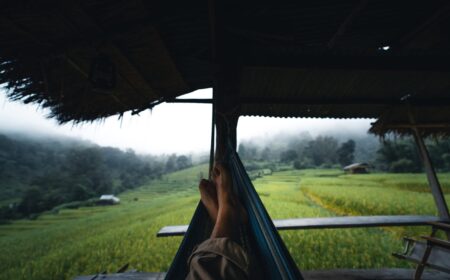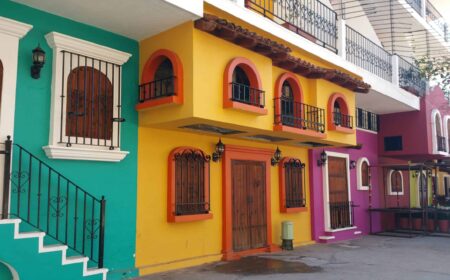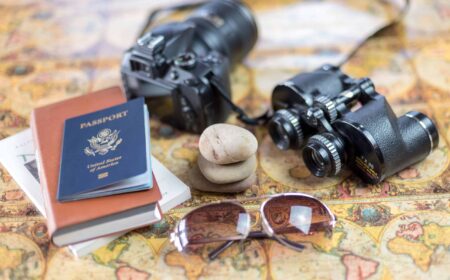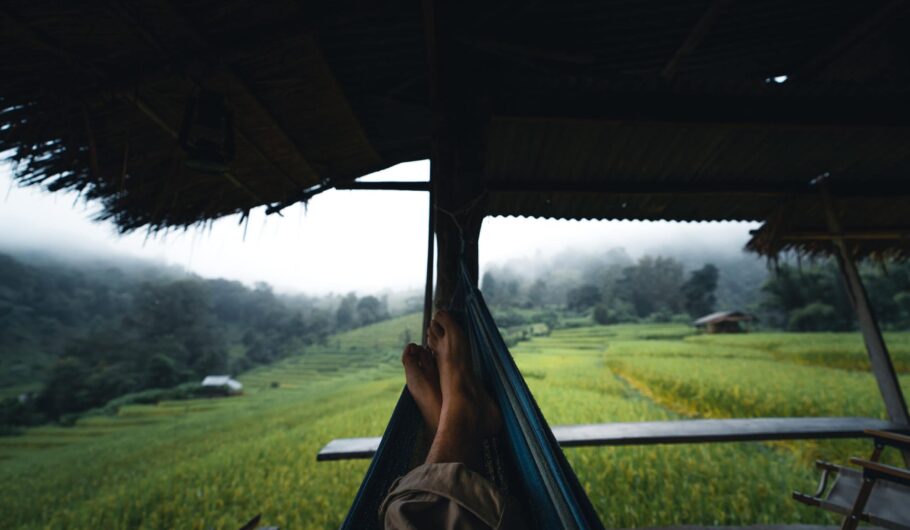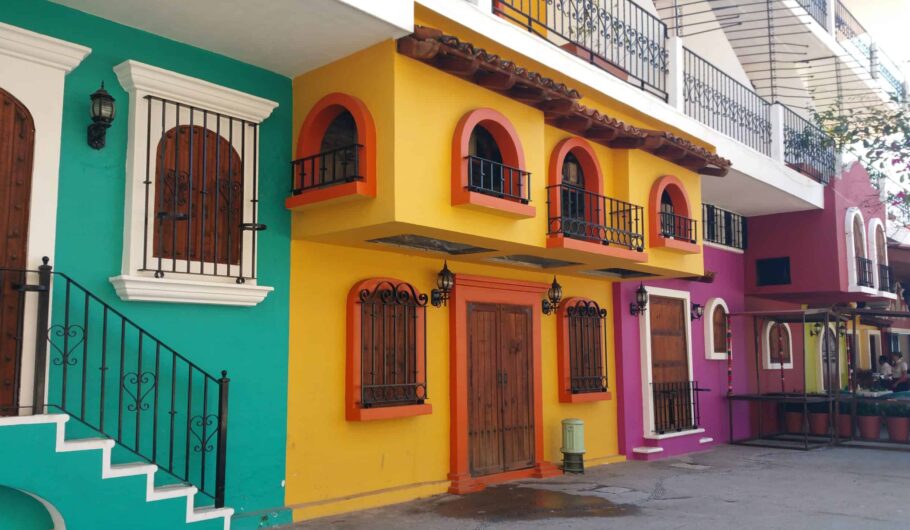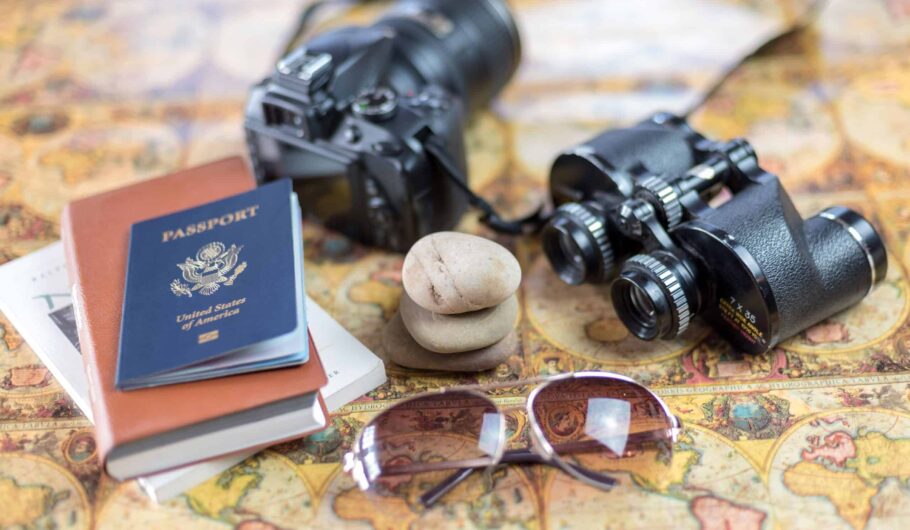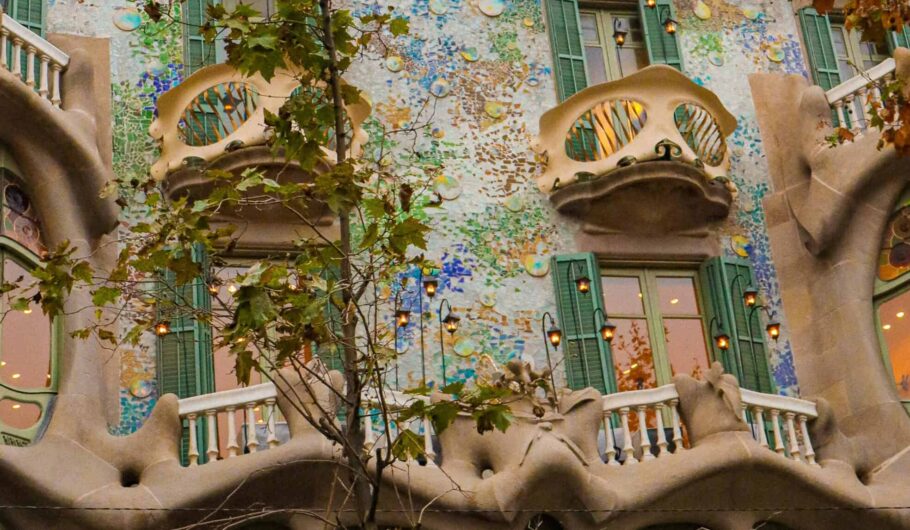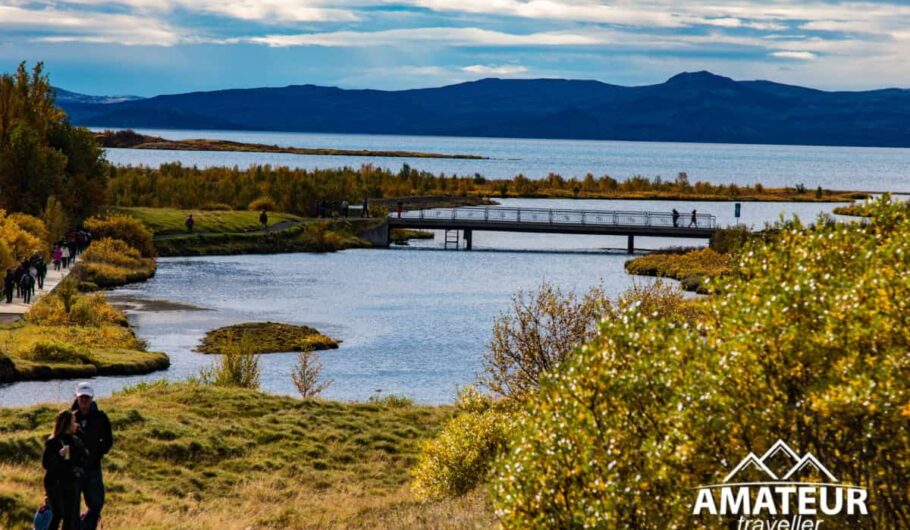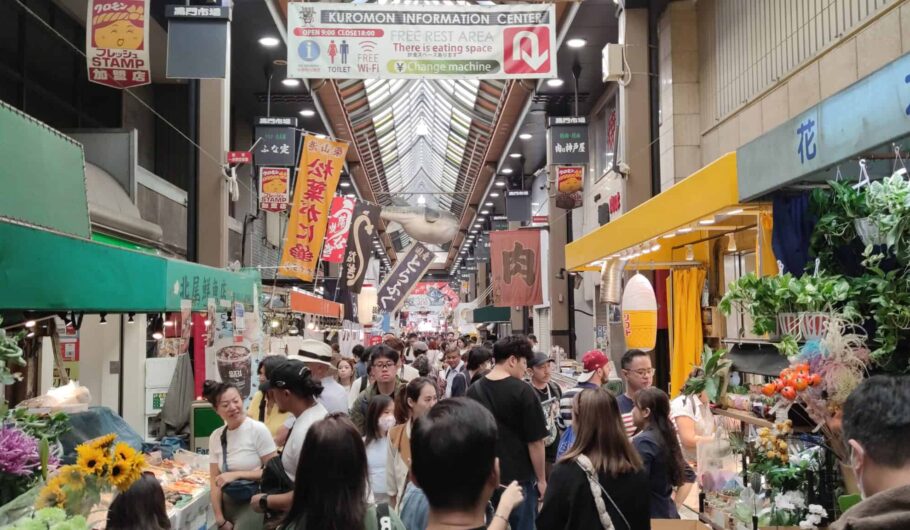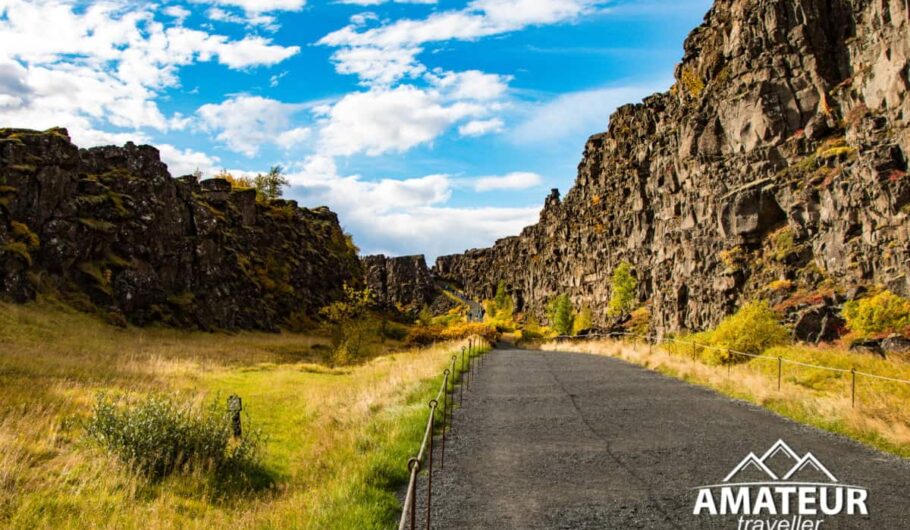How to Capture Incredible Travel Photos: A Friendly Guide
Hello, fellow travelers!
Are you ready to master the art of travel photography?
Whether you’re exploring bustling city streets or serene landscapes, capturing those perfect moments is key to preserving memories.
Today, I’m sharing some tried-and-true tips to help you transform your travel snaps into stunning photos without breaking the bank. Let’s get started!
1. Gear: Keep It Simple, But Smart
Image Suggestion: A traveler using a smartphone clipped to a mini tripod, capturing a sunset over a cobblestone street.
You don’t need a $2,000 camera to take amazing photos. Here’s what really matters:
- Your Smartphone: Modern phones come equipped with fantastic cameras. Use what you’ve got!
- A Portable Tripod: Even a $20 tripod stabilizes shots for silky waterfalls or night skies. You can find them easily online or at a local store.
- Clip-On Lenses: Wide-angle or macro attachments cost under $30 and can expand your creativity significantly.
- Portable Charger: A dead battery means missed moments. Always carry a backup power source!
- A Microfiber Cloth: Smudged lenses can ruin great shots. Wipe yours daily for crystal-clear photos.
Pro Tip: Shoot in your phone’s “Pro” mode to adjust exposure and focus. If you don’t have a Pro mode, simply tap the screen to lock focus, then slide your finger to brighten or darken the shot.
2. Composition: Turn Chaos Into Art
Image Suggestion: A Moroccan market scene, with spices arranged in rows using the rule of thirds grid.
Great composition can turn random snaps into beautiful storytelling masterpieces. Here are a few techniques to try:
- Rule of Thirds: Enable your camera’s grid. Place horizons on the top/bottom line, and subjects at intersecting points.
- Leading Lines: Use paths, rivers, or staircases to guide the eye. For example, a winding trail through a forest can tell a lovely story.
- Frame Within a Frame: Shoot through arches, windows, or foliage to add depth to your photos.
- Fill the Frame: Get close to details—a wrinkled artisan’s hands, the texture of a flower petal.
Practice Exercise: Find a busy street and take 10 shots focusing on different compositional rules. Which tells the best story?
3. Light: The Magic Ingredient
Image Suggestion: A silhouette of a traveler against a Bali sunset, palm trees outlined in gold.
Light can make or break a photo. Here’s how to work with nature’s schedule:
- Golden Hour: Shoot at sunrise or sunset for warm, soft light. Shadows can add drama to your images!
- Overcast Days: Cloudy skies act as natural diffusers—perfect for portraits.
- Avoid Harsh Noon Sun: If you need to shoot midday, seek shade under trees or buildings.
- Backlighting: Place your subject in front of light sources for dreamy glows or silhouettes.
Pro Tip: Tap your phone screen to adjust exposure. Lower it for vivid sunsets, raise it in dim alleys.
4. Storytelling: Capture the Heart of a Place
Image Suggestion: A candid shot of a Thai street vendor flipping pancakes, steam rising around her.
Travel photos should evoke emotions and memories. How can you do this?
- Candid Moments: Wait for authentic interactions—kids laughing, fishermen mending nets.
- Local Culture: Photograph food, festivals, or traditional crafts. Think about a close-up of hand-painted pottery!
- Details Matter: Zoom in on textures—peeling paint, woven baskets, and vibrant street art.
- Sense of Scale: Include a person in vast landscapes (like a hiker dwarfed by mountains) to give a sense of the environment.
Ethical Note: Always ask permission for portraits. A smile and some friendly gestures can go a long way!
5. Editing: Polish Your Gems
Image Suggestion: Split-screen of a raw photo vs. edited version, highlighting subtle tweaks.
Editing isn’t cheating—it’s enhancing what’s already there. Free apps like Snapseed or VSCO can work wonders! Here’s how:
- Crop: Straighten horizons or remove distractions from the image.
- Adjust Exposure/Brightness: Balance shadows and highlights to get the best look.
- Boost Colors Sparingly: Avoid oversaturation—nature’s hues are already pretty perfect!
- Try Black & White: This can add a timeless quality to gritty streets or portraits.
Pro Tip: Save edits as copies. You might want the original later!
6. Practice, Experiment, Repeat
Image Suggestion: A traveler lying on the ground to photograph a temple from a low angle.
The best photographers shoot a lot! Don’t fear mistakes—they are simply lessons waiting to be learned:
- Change Perspectives: Climb rocks, lie down, or shoot through different objects to find exciting angles.
- Shoot in Burst Mode: Capture action (like waves crashing or dancers in motion) and choose the best frame from the bunch.
- Study Inspiration: Follow #TravelPhotography on Instagram or other platforms. What compositions catch your eye?
- Daily Challenge: Take 5 photos daily, focusing on one skill (like lighting or composition).
Conclusion: Your Journey Starts Now
Through my travels, I’ve learned that travel photography isn’t so much about gear—it’s about curiosity. So, pack your phone, tripod, and an open mind. Wander, experiment, and let your unique perspective shine!
Your Assignment: On your next trip, take 3 photos using the techniques shared here.
Share them with #AmateurTraveler—I’d love to cheer you on! Happy snapping! 📸✨
Feel free to let me know if you would like other topics or concepts to be turned into a blog as well!
The Unrushed World: Finding Places Where Travel Still Whispers
Let’s be honest, fellow wanderers. Sometimes it feels like every hidden gem we uncover instantly gets tagged, geo-located, and flooded with identical artisan coffee shops and minimalist boutiques. Gentrification, that sleek, sometimes soulless wave of homogenization, washes over neighborhoods and even entire towns, leaving behind a polished shell that often loses the vibrant, messy soul we travelers initially sought. It’s the bittersweet reality of loving a place to death.
But take heart! Scattered across this incredible planet, like stubborn wildflowers pushing through cracks in the pavement, are destinations holding onto their authentic essence. Places where the rhythm of daily life hasn’t yet been drowned out by the curated playlist of mass tourism, where the local granny selling handmade snacks isn’t competing with a gourmet fusion taco stand, and where the heart of the community still beats strong and unmistakably itself.
These aren’t necessarily “undiscovered” – many are beloved – but they possess a resilience, an isolation, or a fiercely guarded culture that has, so far, kept the more jarring effects of rapid gentrification at bay. They are places to breathe deeply, connect genuinely, and remember why we fell in love with travel in the first place. Let’s wander into a few…

1. The Mountain Whispers of Svaneti, Georgia
High in the Caucasus Mountains, where the air is crisp and the peaks scrape the heavens, lies Svaneti. Forget the polished boulevards of Tbilisi (lovely as they are); Svaneti operates on a different wavelength, governed by ancient stone watchtowers (koshkebi) that have stood sentinel for centuries. Getting here isn’t effortless – winding roads test your resolve – but that very remoteness is its shield.
Life here feels woven from the land. You’ll see villagers haymaking with scythes on impossibly steep slopes, their movements echoing generations past. Stay in a traditional Svan stone house, warmed by a central hearth. Your hostess, likely named Nino or Manana, might serve you kubdari (spiced meat pies) and cha cha (the local firewater) with a warmth that needs no translation. The “tourist infrastructure”? It’s often the family converting a room, the village baker selling bread from his kitchen window, the shared taxis that rattle along the valley floor.
Gentrification hasn’t quite figured out how to scale these mountains and replicate the profound sense of history and community resilience. The towers aren’t photo ops for Instagrammable cafes; they’re still symbols of clan identity and protection. You come here not for luxury spas, but for soul-stirring hikes, conversations over shared meals, and the humbling feeling of being a guest in a landscape that time respects.

2. Soulful Stitches & Shared Plates in Oaxaca’s Central Valleys (Beyond the City)
Oaxaca City is magnificent, vibrant, and yes, feeling the pressures of popularity. But venture just an hour or so beyond into the surrounding valleys – Teotitlán del Valle, Santo Tomás Jalieza, San Bartolo Coyotepec – and you step into a world where indigenous Zapotec culture isn’t a performance; it’s the fabric of life.
In Teotitlán, the scent of wool and natural dyes (cochineal, indigo, moss) fills the air. Families like the Ruiz family in Casa Don Juan have been weaving intricate rugs (tapetes) for generations. Sit with them. Feel the wool, learn about the symbols passed down through dreams and stories. It’s not a factory tour; it’s an invitation into a living art form. Buy directly from the weaver in their home workshop, understanding the weeks of labor in every thread.
Down the road in Santo Tomás Jalieza, the rhythmic clack of backstrap looms creates stunning cotton textiles. Women gather under shade trees, fingers flying, sharing laughter and stories as they work. There’s no curated “artisan market” vibe imposed here; the craft is the market, integrated seamlessly into daily life. In San Bartolo, the black clay pottery of Doña Rosa’s descendants emerges from the earth itself, shaped by hands that know its secrets.
Gentrification struggles here because the economy is deeply rooted in land, tradition, and multi-generational family structures. Tourism exists, but it feels like a respectful exchange, not an invasion. You come to learn, to witness mastery, to share a simple meal of memelas and hot chocolate in a family courtyard, surrounded by the sounds of the village carrying on.

3. The Clan Jetties of Penang, Malaysia: Life on the Water’s Edge
George Town, Penang, is a UNESCO gem bursting with street art and incredible food. Parts of it are undeniably gentrifying. But step onto the Clan Jetties – particularly the less-touristy ones like the Lee Jetty or the Chew Jetty’s quieter ends – and you step back decades.
These are not museums, but vibrant, working-class communities built on stilts over the water. Originally settled by Chinese immigrant families (clans) in the 19th century, life here still revolves around the tides, family ties, and the rhythmic comings and goings of fishing boats. Wooden walkways creak underfoot, connecting brightly painted houses. Laundry flaps in the sea breeze. Kids scoot past on bikes. Elders sit on doorsteps, watching the world float by.
Yes, Chew Jetty has souvenir stalls, but wander deeper. Smell the salt air mixed with incense from tiny clan temples. Hear the clatter of woks from home kitchens. Witness the practicalities of life lived literally on the sea – repairing nets, tending to boats, navigating the walkways during high tide. The jetties resist full gentrification because they are fundamentally homes, not attractions. Residents are (rightfully) protective of their unique heritage and wary of becoming a theme park. Respectful observation, a quiet stroll, maybe buying a cold drink from a tiny family-run stall – that’s the way to experience this fragile, fascinating world.

4. Slow Currents & Smiling Faces on the Mekong’s 4,000 Islands (Si Phan Don), Laos
Deep in southern Laos, where the mighty Mekong River sprawls lazily across a vast archipelago, time adopts the languid pace of the water. Si Phan Don (Four Thousand Islands) is the antidote to frenzy. Don Det and Don Khon get the most visitors, but even here, compared to Thailand’s islands or Vietnam’s hotspots, the vibe is refreshingly unpretentious and slow.
Think basic bamboo bungalows with hammocks overlooking the river, not infinity pools. Think meals of fresh river fish and sticky rice served on rickety tables, not fusion tasting menus. Think bicycles as the primary transport on dusty paths, weaving past water buffalo and waving kids. The soundtrack? The putter of long-tail boats, birdsong, and the gentle flow of the Mekong.
The magic lies in the rhythm. Join locals at sunset to watch the elusive Irrawaddy dolphins surface. Help (if invited) with net-mending. Learn to weave a simple basket. Rent a kayak and get lost in the smaller, quieter channels where life unfolds on the riverbanks – bathing, fishing, washing clothes. Gentrification feels distant here partly due to Laos’ slower development pace, the focus on low-impact ecotourism, and the sheer, soporific power of the river itself. It encourages you to shed expectations, slow your heartbeat, and simply be present. The “luxury” here is the profound sense of peace and the genuine, unhurried smiles of the Lao people.

5. The Timeless Texture of Hoi An’s Neighborhoods (Beyond the Lanterns), Vietnam
Hoi An’s Ancient Town is beautiful, undeniably magical when the lanterns glow… and undeniably crowded, with creeping gentrification in its core. But Hoi An isn’t just the tourist quarter. Wander just a few blocks beyond the well-trodden paths, cross the bridge into neighborhoods like Cam Chau or Cam Nam, and discover a different Hoi An.
Here, the pace slows dramatically. You’ll find families who have lived here for generations, their lives still deeply connected to the Thu Bon River and the surrounding rice paddies. Cycle down lanes shaded by banana trees, past conical hats bobbing over green fields. Stop at a com ga (chicken rice) stall run by a woman who’s been perfecting her recipe for 40 years, her tiny plastic stools filled with locals, not tour groups.
Seek out the quieter craft villages nearby – not the big, tour-bus friendly ones, but smaller family operations. Watch a master carpenter crafting furniture using centuries-old techniques, or find the lady who still makes the intricate tofu skin (fu su) used in local dishes, a painstaking process done in her backyard. The resilience here comes from a deep-rooted community and an economy that still values traditional skills and agriculture alongside tourism. Gentrification nibbles at the edges, but the heart of daily Vietnamese life in these neighborhoods remains strong and welcoming to those who venture beyond the lantern glow.

Treading Gently: Our Responsibility in These Fragile Worlds
Finding these places is a gift. Preserving their magic is a responsibility. How do we visit without becoming the very force we lament?
- Listen More, Direct Less: Don’t arrive with demands. Observe local rhythms and adapt. Is the shop closed for siesta? Come back later. Embrace the pace.
- Spend Locally & Meaningfully: Eat at the family-run pho stall, not the international chain. Buy crafts directly from the maker. Stay in small, locally-owned guesthouses or homestays. Your money has power – direct it into the community.
- Respect is Non-Negotiable: Ask before taking photos of people, especially in intimate or sacred settings. Dress appropriately. Learn a few basic greetings in the local language. A little effort goes a massively long way.
- Embrace the “Imperfect”: Don’t expect western-style efficiency or amenities everywhere. The charm often lies in the quirks, the slower service, the unexpected detours. That’s the realness you came for.
- Be a Learner, Not Just a Consumer: Show genuine interest in traditions, crafts, and daily life. Ask questions respectfully. Be open to understanding different ways of being.
- Share Thoughtfully: Yes, we want others to experience these wonders. But consider how you share. Tagging exact locations of a fragile community or a secluded family spot on social media can inadvertently accelerate change. Be vague, focus on the experience, not the pin on the map.
The Whisper Before the Shout
These destinations won’t stay frozen in time forever. Change is inevitable, and often, development brings needed improvements for local residents. But there’s a profound difference between organic evolution driven by community needs and the rapid, often extractive, force of tourism-driven gentrification.
Seeking out places that still whisper their stories, rather than shout them through a curated megaphone, is about more than just a unique holiday. It’s about connecting with the enduring spirit of place, the resilience of culture, and the simple, profound beauty of lives lived differently. It’s a reminder that the heart of travel isn’t found in the most photogenic cafe, but in the shared smile over a steaming bowl of noodles, the rhythmic clack of a loom, the quiet dignity of a fisherman mending his net at dusk, or the awe of standing beneath mountains that have witnessed centuries pass.
So, go find those whispers. Listen closely. Tread lightly. And cherish the unrushed, authentic soul of the places that, for now, remain gloriously, resiliently, themselves. The world needs them. And so do we.
Puerto Vallarta: The Unseen Price of Paradise – 2025
Nestled between the Sierra Madre Mountains and the sparkling waters of Banderas Bay, Puerto Vallarta has long been a postcard-perfect escape. For decades, its cobblestone streets, vibrant art scene, and warm, welcoming atmosphere have drawn travelers seeking both relaxation and adventure. But beneath the surface of this tropical haven, a quiet crisis is unfolding—one I’ve witnessed firsthand since I began living in and visiting Puerto Vallarta in 2017.

Back then, the city still felt like a well-kept secret. It wasn’t unusual to find a decent apartment for under $300 USD a month, and purchasing a condo for less than $150,000 was still within reach. The peso traded at around 18 to the dollar, making life affordable—a good meal could be had for under $10 USD, and a cold beer cost just a buck. There was a sense of balance, where locals, expats, and tourists coexisted without the crushing weight of today’s hyper-gentrification.
But now, the very essence of what makes Puerto Vallarta magical—its culture, authenticity, and sense of place—is being eroded by a surge in the cost of living that has left many long-term residents, including some of my friends, priced out of their own hometown. Rents in the city’s core now rival those in global hubs like New York and London, while families who have lived here for generations are being pushed to the outskirts, their presence fading beneath the clatter of construction cranes and the hum of luxury short-term rentals.
A City Divided: The New Face of Puerto Vallarta
A stroll through the Zona Romántica, Puerto Vallarta’s historic downtown, reveals a paradox. Quaint cafes serving chilaquiles and freshly squeezed orange juice sit alongside chic wine bars catering to international tastes. Boutique hotels with rooftop infinity pools tower above century-old homes where laundry still sways on wrought-iron balconies. The neighborhood pulses with energy—but for many who once called it home, it no longer feels familiar.
Stories of displacement are common. A one-bedroom apartment in the city center now averages more than $1,200 USD per month—nearly matching rents in cities like Miami or Berlin—while local salaries often hover around half that amount. For service workers, taxi drivers, and educators, the math is impossible. Many have relocated to neighborhoods farther afield, where commutes are longer, infrastructure is sparse, and the sense of community has frayed.
The Perfect Storm: Tourism, Remote Work, and the Short-Term Rental Boom
Puerto Vallarta’s affordability crisis didn’t happen overnight. It’s the result of global trends colliding with local vulnerabilities. The city’s popularity as a tourist destination has skyrocketed, with visitor numbers breaking records year after year. In 2023, over 6 million tourists arrived, lured by direct flights and sun-drenched vistas of the Malecón.
But tourism is only part of the story. The rise of remote work has turned Puerto Vallarta into a magnet for foreign remote workers and retirees. Drawn by the tropical climate and relatively low cost of living compared to their home countries, many have signed year-long leases or purchased second homes, reshaping the housing market. Meanwhile, the explosion of short-term rentals has hollowed out entire neighborhoods. Studies estimate that nearly 40% of downtown housing units are now vacation rentals, reducing availability for long-term residents and driving up prices.
The Cultural Cost: When a City Loses Its Soul
The displacement of long-term residents isn’t just about economics—it’s about identity. Puerto Vallarta’s charm has always been rooted in its local traditions: the taco stands with decades-old recipes, the artisans selling hand-painted ceramics at the weekly mercado, the musicians playing in plaza courtyards. As these elements fade, the city risks becoming a generic “paradise,” tailored to visitors rather than those who sustain its culture.
Even visitors are noticing the shift. A destination once known for its affordability is becoming pricier, with hotel rates up 30% since 2019 and casual beachfront meals now carrying premium price tags. The culinary scene reflects the divide—while high-end fusion restaurants thrive, family-owned fondas are disappearing, replaced by cafes catering to foreign tastes.
Glimmers of Hope: Community Action and Responsible Travel
Amid the challenges, grassroots efforts are emerging. Advocacy groups push for affordable housing policies and stricter regulations on short-term rentals. Some locals are pooling resources to create cooperative housing projects on the city’s outskirts, while others work to revitalize overlooked neighborhoods as hubs for local culture.
Visitors, too, are being encouraged to rethink their impact. Responsible travel initiatives promote supporting locally owned businesses, avoiding short-term rentals in residential areas, and engaging with the community in meaningful ways.
For more on how to travel ethically and sustainably in Puerto Vallarta and beyond, please visit my page: Ethical and Sustainable Travel.

A Crossroads for Paradise
Puerto Vallarta stands at a turning point. The same forces that have brought economic growth—tourism, foreign investment, global connectivity—now threaten to unravel what makes the city unique. Without balance, it risks becoming a place where only those with privilege can afford to stay.
Yet, in the evenings, as the sun dips below the horizon, life continues in quieter corners. Children play soccer on side streets, elders gather in parks, and the rhythms of daily life persist—a reminder of what’s at stake. The question remains: Can Puerto Vallarta welcome the world without losing itself? The answer may determine whether it remains a living city or simply a beautiful backdrop for those passing through.
Check out Vallarta Today for the latest news
Wander Off the Beaten Path
Let’s face it: traveling these days can sometimes feel like joining a flash mob you didn’t sign up for. Picture this: you’re in Barcelona, ready to marvel at Gaudí’s Sagrada Família, but instead of soaking in its celestial beauty, you’re elbow-deep in a crowd of selfie sticks and fanny packs. The struggle is real. Over-tourism has turned some of the world’s most iconic spots into real-life versions of a crowded subway at rush hour. But fear not, intrepid traveler! There’s a whole world of under-the-radar destinations quietly waving their “Welcome” flags, eager for you to explore them without the chaos. Let’s dive into places that promise adventure, culture, and maybe even a photo without 37 strangers photobombing your perfect shot.

Valencia, Spain: Barcelona’s Chill Cousin
If you love Barcelona’s vibe but not its crowds, let Valencia serenade you. This coastal city dances to its own rhythm. Here, paella was born (take that, Barcelona!), and the City of Arts and Sciences looks like a spaceship designed by a very optimistic alien. Valencia’s tourism board has been gently whispering, “Hey, we exist!” for years, promoting their Fallas Festival—a fiery, anarchic celebration where giant papier-mâché sculptures go up in flames. It’s like Burning Man, but with more churros. Plus, Valencia’s beaches are golden and blissfully quiet. Imagine actually hearing the waves instead of a dozen TikTok tutorials.

Kotor, Montenegro: Dubrovnik Without the Game of Thrones Crowds
Dubrovnik’s medieval walls have become a real-life King’s Landing, swarmed by tourists clutching replica Iron Thrones. Just a few hours south, Kotor, Montenegro, offers all the Adriatic charm without the HBO fanfare. Nestled in a fjord-like bay, this town is a maze of cobblestone streets, Venetian architecture, and cats. So. Many. Cats. (They’re basically the unofficial mayors.) Kotor’s been working overtime to attract visitors—think new marina developments and hiking trails like the Ladder of Kotor, which rewards you with views so stunning they’ll make your phone’s camera roll jealous. Bonus: You won’t have to jostle for a seat at a café.

Ljubljana, Slovenia: Prague’s Quieter Sibling
Prague’s Charles Bridge is magical—if you don’t mind sharing it with 5,000 other people at sunrise. For a fairy-tale vibe without the mobs, Ljubljana is your answer. Slovenia’s capital looks like a gnome-friendly utopia, complete with a dragon-guarded castle and a river so clean you could (theoretically) drink it. The city has been hustling to boost tourism, offering free bike rentals and transforming its car-free center into a hub of quirky cafes and open-air markets. Plus, it’s a gateway to Lake Bled, where you can paddle to a church on an island and ring a bell for good luck. Pro tip: The only thing you’ll fight here is the urge to leave.
Albania’s Riviera: Croatia’s Secret Twin
Croatia’s Dalmatian Coast has become the Mediterranean’s VIP section, complete with yacht traffic jams. But across the Adriatic, Albania’s Riviera whispers, “I’m cooler, cheaper, and have zero cruise ships.” With towns like Himarë and Sarandë, this coastline serves up pebbled beaches, turquoise water, and $3 glasses of raki. Albania’s tourism slogan should be, “Remember the ’90s? Neither do we!” The country’s invested in infrastructure (read: less bumpy roads) and promotes UNESCO sites like Butrint, an ancient ruin where you can pretend you’re Indiana Jones minus the rolling boulders.

Colmar, France: If Disney Designed a French Village
Paris is always a good idea… unless you’re allergic to hour-long Louvre lines. Enter Colmar, a storybook town in Alsace where half-timbered houses are painted like a box of macarons. The canals of “Little Venice” are perfect for gondola rides, and the Christmas market is so quaint you’ll half-expect Santa to show up. Colmar’s tourism team has been courting visitors with wine routes and festivals celebrating everything from Alsatian folklore to pickles. Yes, pickles. It’s like France turned the charm dial to “maximum cozy.”

The Azores, Portugal: Hawaii’s Atlantic Doppelgänger
Portugal’s mainland is having a moment, but the Azores—a volcanic archipelago 900 miles off the coast—are where Mother Nature shows off. Think emerald lakes, hot springs, and whales breaching like they’re auditioning for Planet Earth II. The Azores have been pushing sustainable tourism, offering hiking trails through UNESCO biospheres and encouraging visitors to dive into crater lakes. It’s adventure without the adrenaline rush of dodging Segways.

Taiwan: Asia’s Underrated Foodie Paradise
While everyone flocks to Japan or Thailand, Taiwan sits in the corner, casually serving up the best street food on the planet. Night markets in Taipei are a symphony of stinky tofu, bubble tea, and scallion pancakes. Beyond the cuisine, Taiwan’s tourism board is shouting, “We have more than just food!” with campaigns highlighting Taroko Gorge’s marble cliffs and Sun Moon Lake’s misty serenity. Plus, their public transit is so efficient, you’ll wonder why your hometown’s buses can’t get it together.

Tallinn, Estonia: A Medieval Time Capsule
If you’re over Prague’s crowds but still want that medieval magic, Tallinn’s Old Town is a UNESCO gem where cobblestones and Gothic spires reign. The city feels like a real-life RPG village—complete with secret tunnels and artisan workshops. Estonia’s e-residency program might lure digital nomads, but tourists come for the saunas (yes, you have to get naked) and the Christmas market that’s basically a Hallmark movie set.

Namibia: Africa’s Desert Daydream
Safaris in Kenya and Tanzania are iconic, but Namibia offers a desertscape so surreal you’ll question reality. Sossusvlei’s red dunes, the ghostly Deadvlei trees, and the wildlife-rich Etosha National Park make it a photographer’s dream. Namibia’s tourism campaigns highlight community-run lodges and conservation efforts, so your visit supports local heroes protecting rhinos and cheetahs. Plus, the night sky here has more stars than a Hollywood premiere.

Bolivia: South America’s Best-Kept Secret
Machu Picchu’s crowds can make you feel like you’re queueing for a rollercoaster. Bolivia, meanwhile, offers the Salar de Uyuni—a salt flat so vast and mirror-like, you’ll wonder if you’ve stepped into a Salvador Dalí painting. The country’s been quietly improving tourist trails, like the Yungas Road (dubbed “Death Road” for cyclists seeking thrills) and Lake Titicaca’s serene islands. Pro tip: The altitude might leave you breathless, but the lack of crowds won’t.
The Final Postcard
Travel isn’t about checking off postcard spots; it’s about the stories you collect when you wander where the Wi-Fi is weak but the experiences are strong. These destinations aren’t just alternatives—they’re invitations to explore places where tourism is a welcome guest, not a gatecrasher. So next time you plan a trip, ask yourself: Do I want to follow the crowds, or find a place that’ll make me feel like I’ve discovered something special? (Hint: The latter involves way better bragging rights.)
Pack your bags, embrace the road less Instagrammed, and remember: the best adventures don’t always come with a queue. Happy wandering! 🌍✨
How to Survive a 15-Hour Flight
How to Survive a 15-Hour Flight: Your Ultimate Guide to Comfort and Sanity
Flying for 15 hours straight can feel like a marathon. Whether you’re traveling for business, adventure, or to reunite with loved ones, surviving a long-haul flight requires strategy, preparation, and a little creativity. From battling boredom to avoiding stiff muscles and jet lag, this guide covers everything you need to know to make your journey as comfortable as possible. We’ll also recommend websites and tools to help you tackle each challenge head-on.
Pre-Flight Preparation
Choose Your Seat Wisely
Your seat choice can make or break your flight experience. Opt for an aisle seat if you prioritize easy access to the bathroom and legroom. Window seats are ideal for uninterrupted sleep and views, while exit rows offer extra space (though they come with responsibilities). Avoid seats near restrooms or galleys, where noise and foot traffic are constant.
Website to Try: SeatGuru
This site provides detailed seat maps for most airlines, highlighting the best (and worst) seats based on legroom, recline, and proximity to amenities.
Pack a Survival Kit
A well-curated carry-on is your lifeline. Essentials include:
- Noise-canceling headphones (like Bose or Sony)
- Compression socks to boost circulation
- Eye mask and earplugs for sleep
- Reusable water bottle (fill after security)
- Snacks (nuts, granola bars, or dried fruit)
- Toiletries (face wipes, toothpaste, moisturizer)
Website to Try: Amazon
Stock up on travel-sized toiletries, compact pillows, and other flight essentials here.
Dress for Success
Comfort is key. Wear loose, breathable layers (think cotton or moisture-wicking fabrics) and slip-on shoes for easy removal during security and in-flight. Avoid tight jeans or restrictive clothing.
Adjust Your Sleep Schedule
If crossing time zones, gradually shift your sleep schedule 2–3 days before departure. Apps like Timeshifter use science-backed plans to minimize jet lag by aligning your body clock with your destination’s time zone.
Hydrate and Eat Light
Avoid heavy, salty, or greasy meals before flying to reduce bloating. Load up on water and electrolyte-rich drinks like coconut water.
Website to Try: MyFitnessPal
Track your pre-flight nutrition to ensure you’re eating balanced, light meals.
During the Flight
Stay Hydrated
The cabin’s dry air can dehydrate you quickly. Aim to drink 8–10 ounces of water every hour. Avoid excessive caffeine or alcohol, which worsen dehydration.
Move Regularly
Sitting for hours increases the risk of deep vein thrombosis (DVT). Every 1–2 hours, stretch your legs, walk the aisle, or do seated exercises:
- Ankle circles
- Knee lifts
- Neck rolls
Website to Try: NHS Exercises for Flying
The UK’s National Health Service website offers simple in-seat stretches to keep blood flowing.
Optimize Sleep
If your flight aligns with nighttime at your destination, prioritize sleep. Use your eye mask, noise-canceling headphones, and a neck pillow (the Trtl Pillow is a cult favorite for its ergonomic support). Consider melatonin supplements or a sleep aid if approved by your doctor.
Entertain Yourself
Boredom is inevitable, so diversify your entertainment:
- Download movies/shows via Netflix or Disney+
- Load up on podcasts or audiobooks (Audible)
- Bring a book or e-reader (Kindle)
- Learn a language with Duolingo
5. Practice Self-Care
Long flights can leave your skin and eyes feeling parched. Use a hydrating facial mist, lip balm, and eye drops. Brush your teeth mid-flight to feel refreshed.
Eat Strategically
Airplane food is often high in sodium and preservatives. If possible, pre-order a special meal (vegetarian, low-sodium, etc.) when booking your ticket. Pack your own snacks like fresh fruit or protein bars to avoid hunger pangs.
Post-Flight Recovery
Reset Your Clock
Expose yourself to natural sunlight upon arrival to reset your circadian rhythm. If it’s nighttime, resist the urge to nap—push through until a reasonable bedtime.
Website to Try: Excercises for Long-Haul Travel
Move around and arrive at your destination feeling great.
Stretch and Shower
A quick stretch session or yoga flow (Down Dog offers travel-friendly routines) will ease muscle stiffness. A hot shower can also work wonders for rejuvenation.
Stay Active
Light exercise, like a walk or swim, boosts circulation and energy levels. Avoid intense workouts until you’re fully adjusted.
Pro Tips from Frequent Flyers
- Upgrade If Possible: Use points or last-minute upgrade auctions (ExpertFlyer) to snag business class for more space.
- Disinfect Your Area: Wipe down tray tables and armrests with antibacterial wipes.
- Charge Everything: Bring a portable charger (Anker PowerCore) to keep devices alive.
Final Thoughts
A 15-hour flight doesn’t have to be torture. With thoughtful preparation, smart in-flight habits, and post-flight recovery, you’ll arrive at your destination feeling human—and maybe even refreshed. Remember, the journey is part of the adventure!
Safe travels! 🌍✈️
Resources Mentioned:
- SeatGuru: https://www.seatguru.com
- Amazon: https://www.amazon.com
- Timeshifter: https://www.timeshifter.com
- MyFitnessPal: https://www.myfitnesspal.com
- Trtl Pillow: https://www.trtltravel.com
- Netflix: https://www.netflix.com
- Audible: https://www.audible.com
- Jet Lag Rooster: https://www.jetlagrooster.com
- ExpertFlyer: https://www.expertflyer.com
Uncovering Iceland’s Stunning Golden Circle
Iceland’s Golden Circle is a legendary route that captures the raw, untamed beauty of this Nordic island in a single journey. From erupting geysers to tectonic rifts and thunderous waterfalls, the 190-mile loop is a showcase of Iceland’s geological drama. But to truly savor its magic, you’ll need more than a day—and a car is non-negotiable. Having recently explored the Golden Circle myself, I’m here to share why splitting this adventure into two days is the key to unlocking its full potential, along with tips to dodge speeding fines, embrace spontaneity, and stay dry under Iceland’s moody skies.
Why You Need a Car (and Patience)
Let’s get this out of the way: the Golden Circle is not a public transport-friendly route. While tour buses frequent the main stops, they operate on rigid schedules that leave little room for detours or quiet contemplation. Renting a car grants freedom—to chase hidden waterfalls, linger at geothermal pools, or pull over when a rainbow arcs over a lava field. Just remember: Iceland’s speed limits are strictly enforced. On paved roads, you’ll typically cruise at 90 km/h, while gravel roads demand a slower 80 km/h. Cameras are common, and speeding fines can cost hundreds of dollars, so channel your inner zen driver and enjoy the ride. Trust me, you’ll want to go slow anyway—the landscapes demand it.
Two Days, Double the Magic
Most travelers cram the Golden Circle into a single day, but this leaves little time for deeper exploration. By splitting the trip into two days, you’ll avoid burnout and uncover hidden gems. I based myself at the Stracta Hotel in Hella, a cozy, no-fuss retreat with geothermal hot tubs—perfect for soaking sore muscles after hiking. Its central location between the Golden Circle and South Coast also makes it ideal for day two’s waterfall-heavy itinerary. The hotel’s rustic charm and proximity to quiet countryside roads set the tone for a trip that’s equal parts adventure and relaxation.
Day 1: The Classic Golden Circle Highlights
Kick off your journey early, heading northeast from Reykjavik toward the three iconic stops. First, Þingvellir National Park offers a chance to walk between continents, where the North American and Eurasian tectonic plates inch apart. The park is steeped in history too—it’s where Iceland’s first parliament convened in 930 AD. Don’t miss the serene Öxarárfoss waterfall, tucked into the rift valley like a hidden treasure. Its gentle cascade contrasts with the park’s dramatic cliffs, creating a moment of calm amid the geological grandeur.
Next, the Geysir Geothermal Area invites you to witness nature’s fireworks. Strokkur, the lively geyser, erupts every 5–10 minutes, shooting boiling water 100 feet skyward. The sulfuric steam and bubbling mud pools feel otherworldly—like stepping onto another planet. Wander the boardwalks and let the primal energy of the earth remind you of Iceland’s volcanic heartbeat.
Finally, Gullfoss Waterfall—nicknamed “Golden Falls”—is the Circle’s crowning glory. This two-tiered beast on the Hvítá River roars with a fury that echoes across the canyon. On sunny days, rainbows dance in its mist, but brace yourself—the spray is relentless. Standing at the edge, you’ll feel humbled by the raw power of water carving its path through ancient rock.
After Gullfoss, consider a detour to Faxi Waterfall, a lesser-known cascade with a tranquil vibe. Its wide, stepped falls are perfect for a quiet picnic or a moment of reflection before winding down. End your day with the hour-long drive to Hella, where Stracta Hotel’s warm beds and steamy hot tubs await, offering a cozy refuge under Iceland’s endless summer twilight or winter auroras.
Day 2: Waterfalls, Hidden Gems, and Getting Gloriously Lost
Day two is all about waterfalls—my personal obsession. Head southeast from Hella toward Iceland’s South Coast, where the Golden Circle’s magic spills into even wilder terrain.
First on the list is Seljalandsfoss, a 200-foot curtain of water you can walk behind for a surreal perspective. The path loops around the falls, offering glimpses of the surrounding farmland through the shimmering veil of water. Just be prepared to get soaked—waterproof gear is mandatory here. A short five-minute walk from Seljalandsfoss leads to Gljúfrabúi, a hidden gem tucked inside a mossy canyon. Wade through a shallow stream to reach its fern-framed cascade, where sunlight filters through the narrow opening above, casting an ethereal glow on the rocks.
No waterfall journey is complete without Skógafoss, my favorite stop. This broad, roaring giant is a force of nature, throwing up a perpetual mist that drenches anyone brave enough to approach its base. Climb the 500-step staircase beside it for a panoramic view of the coast, where the river meets the sea in a haze of spray and sunlight. On clear days, the rainbow arching over Skógafoss feels like a reward for enduring the drizzle—a fleeting reminder of Iceland’s ability to balance fury with beauty.
Beyond the famous falls, keep your eyes peeled for unnamed cascades along Route 1. I stumbled upon a tiny waterfall near Hvolsvöllur, where wild sheep grazed nearby and the only sound was the rush of water over moss-covered stones. These unplanned finds—quiet, unmarked, and utterly magical—are the soul of a Golden Circle road trip.
If time allows, venture farther east to Reynisfjara Black Sand Beach, where basalt columns rise like organ pipes and waves crash against the shore with a thunderous roar. Or head west of Hella to Þjórsárdalur Valley, home to Hjálparfoss, a photogenic waterfall where two rivers meet in a rocky embrace. Each detour reveals a new layer of Iceland’s untamed landscape.
The Allure of Vik: A Detour into Dramatic Coastal Beauty
While the Golden Circle’s official route doesn’t stretch to Iceland’s southernmost village, Vik is well worth the extra miles. Located about 30 minutes beyond Skógafoss, this tiny hamlet is framed by some of the country’s most staggering scenery. The drive alone is a feast for the eyes: rolling green hills give way to jagged cliffs and vast black sand beaches. Vik itself sits in the shadow of Reynisfjall Mountain, with the iconic Reynisfjara Beach just a stone’s throw away. Here, the Atlantic Ocean hurls itself against the shore, sculpting basalt columns into geometric masterpieces and chiseling sea stacks like the legendary Reynisdrangar from ancient lava.
Wander the windswept beach, but keep a safe distance from the waves—their sneaker tides are infamous. Back in Vik, the red-roofed church perched on a hill offers panoramic views of the village’s wild surroundings, where puffins nest in summer and storms paint the sky in winter. It’s a place where nature’s drama feels almost theatrical, and even a short stop here etches itself into memory.
Practical Tips for a Smooth Journey
A sturdy raincoat is your best friend here. Iceland’s winds laugh at umbrellas, and waterfalls like Seljalandsfoss or Skógafoss will leave you drenched without proper gear. Opt for a waterproof jacket with a hood, and pair it with quick-dry pants—trust me, you’ll thank yourself later.
Respect the road. Iceland’s highways mix paved stretches with gravel sections that demand cautious driving. Sudden weather changes can reduce visibility, and sheep often wander onto roads without warning. Download offline maps beforehand—GPS signals vanish quickly in remote areas—and keep an eye out for speed limit signs. Fines for speeding are notoriously steep, and cameras are strategically placed to catch lead-footed drivers.
Finally, embrace the joy of getting lost. Some of my favorite moments came from wrong turns. A missed exit led me to a family-run farm selling rich lamb soup, a welcome pitstop on a chilly afternoon. Another “scenic route” detour revealed a hillside blanketed in neon-green moss, glowing under a patch of sunlight. Iceland rewards curiosity, so let the road surprise you.
Final Thoughts
The Golden Circle isn’t just a checklist—it’s an invitation to slow down and let Iceland’s raw beauty sink in. By stretching the journey over two days, you’ll trade rush for reverence, swapping crowded parking lots for quiet moments at lesser-known falls. Stay at Stracta Hotel, pack your raincoat, and let the road surprise you. After all, in a land where fire and ice collide, the best adventures are often the ones you don’t plan.
Why Everyone Should Try Solo Travel At Least Once
There’s something undeniably intimidating about the idea of traveling alone. No built-in companion to share memories with, no one to split decisions (or bills), and no safety net if things go sideways. But here’s the secret: that’s exactly why you should do it—and there’s no better place to embrace solo travel than Japan. My solo journey through this captivating country taught me more about independence, culture, and myself than I ever imagined. Here’s why everyone should take the leap at least once, and why Japan is the ideal setting for your solo adventure.
1. Freedom to Craft Your Own Journey
Japan’s blend of ancient traditions and cutting-edge modernity offers endless possibilities, and traveling solo means you get to explore them all on your terms. Without the need to compromise, I could linger at a tranquil shrine for hours or revisit a bustling market twice in one day just because I loved the energy.
No Compromises, No Regrets
When you’re alone, every second is yours to design. On my trip, I spent an entire afternoon at Kyoto’s Fushimi Inari Taisha shrine, wandering its iconic torii gates at my own pace. I returned the next morning to see the sunlight filter through the arches differently—a luxury I wouldn’t have had if I’d been coordinating with someone else’s schedule. Solo travel ensures you never have to rush past something that moves you.
The Joy of Spontaneity
Japan rewards those who embrace flexibility. One evening in Tokyo, I stumbled upon a tiny ramen shop down an alleyway and decided to try it on a whim. It felt a little awkward at first, but found the ramen and gyoza so delicious, that I did not focus on the discomfort. The food alone provide all the comfort I needed. These unplanned moments became the highlights of my trip—proof that spontaneity often leads to the most authentic experiences.
2. You’ll Learn More Than Any Guidebook Can Teach
Traveling alone in Japan turns every day into a lesson in cultural immersion and self-reliance. Without a companion to lean on, I became more observant, resourceful, and open to the world around me.
Mistakes Are Your Best Teachers
I’ll admit it: I made plenty of blunders. Once, I accidentally got lost looking for Harajuki and Takeshita, but ended up walking through a beautiful, quiet area of town. Another time, I missed the cable car down from Mount Misen, and was forced to walk down the mountain on my own. These “mistakes” taught me to laugh at myself, enjoy the moment, and embrace the unexpected—skills that are invaluable both on the road and in everyday life. I have always loved getting myself lost and these were opportunities for me to experience this.
Cultural Immersion on Your Terms
Solo travel strips away distractions, allowing you to absorb details deeply. In Japan, I noticed subtleties I might have missed with a companion: the precise choreography of a tea ceremony, the quiet reverence of locals at temples, and the artistry behind even the simplest convenience store meal. Without conversation to fill the space, I could truly appreciate the rhythm of daily life.
3. Deeper Connections—With Places and People
Japan’s reputation for politeness and order doesn’t mean it’s impersonal. Solo travel here often leads to heartfelt interactions and a profound sense of connection.
A Front-Row Seat to Tradition
Solo travel let me engage with Japan’s culture on a personal level. In Nara, I spent hours sketching the Todai-ji Temple’s giant Buddha statue, observing visitors bow and pray. Later, a local shopkeeper noticed my interest in calligraphy and invited me to try writing kanji characters with her. These quiet, unscripted moments felt like gifts.
4. Convenience That Empowers Solo Travel
Japan’s efficiency and solo-friendly infrastructure make it a stress-free destination for independent explorers.
Seamless Navigation
Japan’s public transit system is a marvel of punctuality and clarity. The Shinkansen (bullet train) whisks you between cities at 200+ mph, with platforms marked in both Japanese and English. Apps like Google Maps and Japan Travel by NAVITIME provide real-time train schedules, making it nearly impossible to get lost.
Solo-Friendly Accommodation
Capsule hotels are a uniquely Japanese experience tailored to solo travelers. I stayed in one in Osaka, where my pod came equipped with a charging station, adjustable lighting, and a privacy screen. The shared lounges and onsens (hot springs) offered opportunities to mingle, but the design ensured I could retreat to my own space whenever I wanted. It’s the perfect balance of community and solitude.

5. The Gift of Time—With Yourself
Japan’s emphasis on mindfulness and simplicity makes it the perfect place to reconnect with yourself.
Embrace the Art of Doing Nothing
In Hiroshima, I sat by the Peace Memorial Park’s pond for an hour, reflecting on the city’s history and resilience. In Tokyo, I people-watched at Shinjuku Station, marveling at the organized chaos. Solo travel taught me to appreciate stillness—a skill I’ve carried home.
Confronting (and Conquering) Loneliness
Yes, there were moments of loneliness. But in Japan, solitude feels safe and even peaceful. I learned to enjoy my own company, whether I was reading in a café or soaking in a public onsen. By the end of the trip, I craved these quiet moments as much as the adventures.
6. You’ll Surprise Yourself
Solo travel in Japan revealed strengths I didn’t know I had. Navigating Tokyo’s subway system, ordering food in broken Japanese, and finding my way back after a wrong turn all boosted my confidence.
Discovering New Passions
Without outside influence, I stumbled into unexpected joys. I never thought I’d enjoy wandering art museums alone, but Tokyo’s teamLab Borderless digital exhibit left me mesmerized. Now, I seek out immersive art experiences everywhere I go.
7. Practical Tips for Solo Travel in Japan
Japan is one of the safest, most solo-friendly countries in the world. A few tips to make your journey smoother:
- Stay Connected: Rent a pocket Wi-Fi for navigation and translation apps.
- Learn Basic Phrases: Even “arigatou gozaimasu” (thank you) earns smiles.
- Dine Solo Fearlessly: Sushi counters, ramen shops, and izakayas cater to solo diners.
The Lasting Impact of Solo Travel
Solo travel in Japan isn’t just about temples and sushi—it’s about rediscovering your ability to adapt, connect, and thrive on your own terms. You’ll return home with sharper instincts, deeper curiosity, and the quiet confidence that comes from knowing you can navigate the unknown.
Ready to Take the Leap?
Japan’s safety, efficiency, and cultural richness make it the perfect playground for solo travelers. Whether you’re marveling at Kyoto’s golden pavilion, getting lost in Tokyo’s neon-lit streets, or sharing a laugh with strangers over sake, you’ll realize the best companion you’ll ever have is already with you: you.
So pack your bag, book that ticket, and step into the land of the rising sun. Your adventure—and your self—awaits.
Solo Adventure at Þingvellir
Solo Exploration at Þingvellir: A Place Where Continents Converge and History Unfolds
Embarking on a journey to Þingvellir National Park is a truly unique experience that showcases the marvel of nature and the richness of Icelandic heritage. Nestled within the captivating Golden Circle, which spans approximately 140 miles (about 230 kilometers), this destination is not just a stopover but a core element of a fascinating route that also encompasses the Geysir geothermal area and the majestic Gullfoss waterfall.
At Þingvellir, visitors can witness the stunning Almannagjá Gorge, a dramatic chasm that delineates the boundary of the Mid-Atlantic Rift. This remarkable feature, along with the park’s historic significance, offers an exceptional glimpse into the geological and cultural past of the region.
For those eager to explore, the Öxarárfoss waterfall trail is an excellent choice, typically taking around an hour for a round trip. This scenic 4.5 km hike provides an opportunity to immerse oneself in the natural beauty of the park. If time permits, also consider enjoying the other hiking trails in Þingvellir, as there are plenty to choose from for outdoor enthusiasts.
While many people flock to Þingvellir during the peak summer months, May and June, in particular, present an ideal time for a visit, allowing you to indulge in the area’s serene beauty without the summer crowds. Regardless of the season, Þingvellir National Park stands out as an enchanting destination, beckoning those ready to explore its wonders where the past and present beautifully intertwine.
Beneath the refreshing Icelandic breeze, I found myself captivated by the pristine waters of the Silfra Fissure, my fingers grazing the boundaries between the North American and Eurasian tectonic plates. Experiencing the sensation of touching two continents simultaneously is truly a rare moment. This remarkable place is Þingvellir National Park, a UNESCO World Heritage Site where history, geology, and breathtaking natural beauty converge—an ideal haven for solo adventurers.
The Golden Circle: Iconic Road Trip Through Iceland
The Golden Circle in Iceland spans approximately 140 miles, or about 230 kilometers, forming a scenic loop packed with incredible sights. This popular route is renowned for connecting three major attractions: Þingvellir National Park, the Geysir geothermal area, and the stunning Gullfoss waterfall. It’s important to note that while Geysir Hot Springs and Gullfoss are notable stops, the Golden Circle encompasses a broader range of natural wonders.
One of the highlights within Þingvellir National Park is the Almannagjá Gorge, a remarkable feature of the Mid-Atlantic Rift. Although often referred to as a rift valley, it is more accurately categorized as a canyon or chasm. This geological wonder adds to the allure of the park.
For those looking to explore further, the Öxarárfoss waterfall trail presents a delightful hiking experience, typically taking about an hour round trip. The longer loop around the trail may take approximately 1 hour and 35 minutes, while a quicker route can be completed in just 15 to 20 minutes from the parking area.
Another hiking option, the Hellisheiði trail, covers roughly 7 kilometers, distinguishing itself from other hikes found within Þingvellir, as it is situated in the Hengill region.
When planning a visit to Þingvellir, May and June are often recommended for exploring this captivating area, although any time of year offers its unique beauty and advantages.
Þingvellir is the initial destination on Iceland’s renowned Golden Circle, a loop measuring approximately 140 miles (about 230 kilometers). This route also features the dynamic Geysir geothermal area and the magnificent Gullfoss waterfall. It’s an excellent choice for solo adventurers, offering a manageable distance, clear signage, and an abundance of natural beauty. Whether you choose to rent a vehicle or participate in a guided tour (more details to follow), set aside a full day to fully experience these remarkable sights. To avoid large crowds, especially during the busier summer months, it’s wise to start your journey early.
Why Þingvellir Captures Attention
Þingvellir National Park stands out as a must-see destination for visitors to Iceland. This iconic site is a vital part of the Golden Circle, which spans approximately 140 miles (or about 230 kilometers) and also features the Geysir geothermal area and the magnificent Gullfoss waterfall. More than just a hot spring destination, Þingvellir offers a unique glimpse into the natural beauty and geological significance of the region.
One interesting aspect of this park is the Almannagjá Gorge, a dramatic chasm that defines the boundary of the Mid-Atlantic Rift. While it’s often mistaken for a rift valley, it actually represents a striking canyon that showcases the tectonic forces shaping the landscape.
For those looking to explore on foot, the Öxarárfoss waterfall trail provides an accessible pathway, taking about 1 hour for a round trip to view the stunning falls. There’s even a shorter option that can be completed in approximately 15-20 minutes from the parking area.
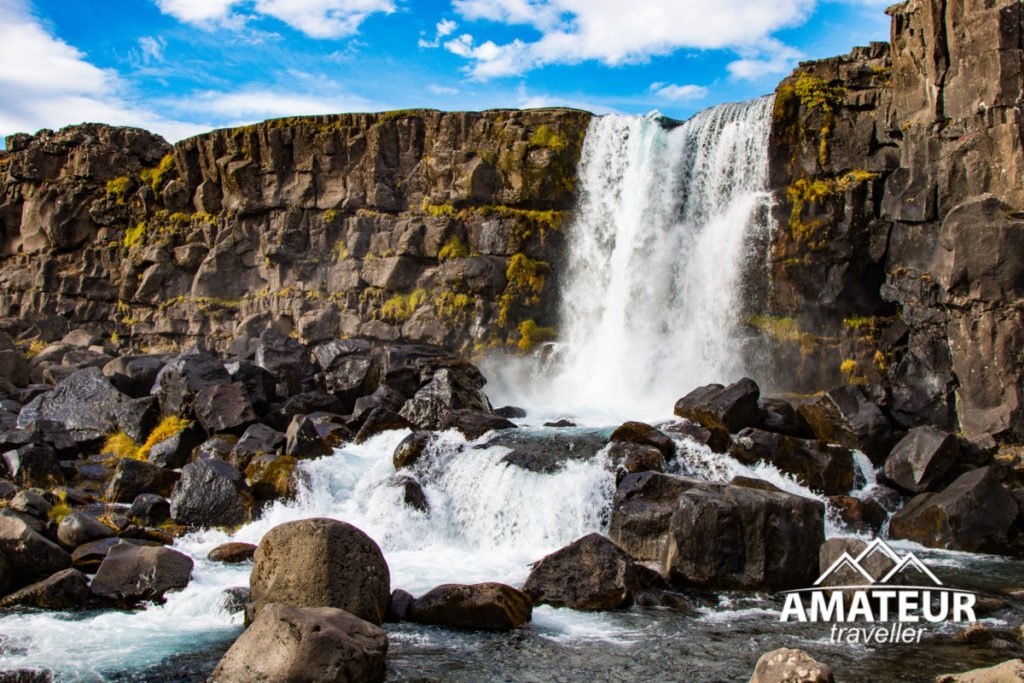
While hiking enthusiasts may consider other trails such as the Hellisheiði hike, which is located near Hengill and is about 7 kilometers long, Þingvellir offers its own myriad of paths suitable for all levels.
Visiting Þingvellir in May or June tends to provide a great experience due to beautiful weather, but truly, this park is a year-round gem, each season presenting its own distinct charm and scenery.
1. Strolling Across Boundaries
Exploring the Golden Circle in Iceland offers a unique opportunity to walk between two continents. This remarkable route, spanning approximately 140 miles (about 230 kilometers), beautifully links Þingvellir National Park, the Geysir geothermal area, and the stunning Gullfoss waterfall. At Þingvellir, you can marvel at Almannagjá, a gorge that signifies the Mid-Atlantic Rift’s boundary, representing a significant geological feature instead of a rift valley.
While hiking in the park, the trail leading to Öxarárfoss waterfall is a delightful journey of around 1 hour and 35 minutes for the longer loop, or about 15-20 minutes for a brief stroll from the parking area. Although Hellisheiði’s hiking trail isn’t situated in Þingvellir, it captivates many with its scenic surroundings and is roughly 7 kilometers long.
Though summer may seem like the prime season, Þingvellir’s beauty shines throughout the year, with May and June often proving to be particularly splendid months for a visit.
The park is located on the Mid-Atlantic Ridge, where tectonic plates gradually move apart. Explore the Almannagjá Gorge, a stunning canyon bordered by towering cliffs. From this vantage point, you find yourself positioned between two continents—an awe-inspiring testament to the planet’s tremendous forces. Be sure to experience the Silfra Fissure, offering opportunities to snorkel or dive in glacial meltwater with visibility surpassing 100 meters (it’s advisable to book a guided tour, as they supply dry suits!).
2. Timeless Tales in the Stones
The history of Þingvellir National Park is etched in its magnificent landscapes. This UNESCO World Heritage Site isn’t just revered for its geological significance, but also for its rich cultural heritage. Here, the Alþingi, one of the world’s oldest parliaments, was established in 930 AD, marking the birth of Iceland’s legislative assembly. As you traverse this incredible location, you’ll witness the convergence of nature and history, from the striking Almannagjá gorge, which highlights the Mid-Atlantic Rift’s dramatic geological activity, to the serene Öxarárfoss waterfall, accessible via trails that offer a variety of experiences for hikers of different levels. Exploring Þingvellir is like walking through a living history book, where every rock and pathway whispers stories of the past. Although it captivates visitors year-round, those planning a trip in May or June will find particularly pleasant weather to fully appreciate its beauty and historical importance.
Þingvellir translates to “Parliament Plains.” In the year 930 AD, Vikings founded Alþingi, which stands as one of the oldest democratic assemblies globally. Picture lawmakers convening at Lögberg (Law Rock) within this dramatic scenery. The visitor center offers insights into this fascinating heritage—ideal for individual travelers seeking to understand the significance of the site.
3. Paths for Every Pace
Iceland’s Golden Circle features a variety of trails suited for all hikers. From leisurely walks to more vigorous treks, there’s something for everyone. A particularly enjoyable route is the Öxarárfoss waterfall trail, located in Þingvellir National Park, which can be completed in about 15-20 minutes for a quick stroll, or approximately 1 hour and 35 minutes for those opting for the longer loop trail. Whether you’re an experienced hiker or just looking for a pleasant day out, the magnificent landscapes of the Golden Circle will surely inspire and delight you. Remember, while Þingvellir National Park is a captivating spot year-round, many agree that a visit in May or June offers particularly stunning views.
Hiking alone in this area is both secure and fulfilling. Explore the Öxarárfoss waterfall trail, which typically takes about 1 hour and 35 minutes for the longer loop, or venture on other extended paths, such as the Hellisheiði hike, which spans roughly 7 kilometers. The trails are clearly indicated, but remember to dress in layers, as the weather in Iceland can change rapidly.
Optimal Visit Timing: A Seasonal Overview
When planning a trip to Þingvellir National Park, many wonder about the ideal time to experience its beauty. While the summer months of July and August are popular, they can be quite crowded. In contrast, May and June offer a wonderful opportunity to enjoy the park’s stunning landscapes with fewer visitors. However, it’s important to note that Þingvellir is a remarkable destination throughout the year, with each season presenting its unique charm and advantages. Whether you visit in winter, spring, summer, or autumn, you’re bound to have a memorable experience in this enchanting area.
- Summer (June–August): Experience the midnight sun, vibrant foliage, and temperatures hovering around 10–15°C (50–59°F). Although this season attracts many visitors, it offers a lively atmosphere, making it ideal for connecting with other travelers.
- Shoulder Seasons (May/September): Experience smaller crowds and milder temperatures ranging from 5 to 10°C (41 to 50°F). September provides opportunities to witness the Northern Lights.
- Winter (October–April): Experience a serene, snow-covered landscape illuminated by the northern lights. Be cautious as roads can be slippery; opting for guided tours is advisable. If you’re exploring on your own, make sure to make the most of the available daylight hours.
Anticipations & Duration Required
When planning your visit, get ready for a captivating experience, especially along the Golden Circle, which encompasses a roughly 140-mile (about 230-kilometer) loop. This scenic route takes you through some of Iceland’s most incredible attractions, including Þingvellir National Park, the Geysir geothermal area, and the impressive Gullfoss waterfall.
While exploring Þingvellir, don’t miss the Almannagjá Gorge, which is a notable feature of the Mid-Atlantic Rift and is often regarded as a canyon rather than a rift valley. For those eager to explore the Öxarárfoss waterfall, the trail offers a hike that lasts around 1 hour and 35 minutes for the longer route or a quick 15-20 minute stroll from the parking area.
If you’re considering hiking in the region, remember that there are various options beyond Þingvellir. The Hellisheiði trek, for instance, spans approximately 7 kilometers and is situated in the Hengill area, separate from Þingvellir’s trails.
For visitors aiming to experience Þingvellir, May or June presents a favorable time, though the park is stunning year-round, each season showcasing its unique charm.
- At Þingvellir: Plan for around 2 to 3 hours to take in the sights. Wander through the gorge, check out the waterfall, and capture pictures from the tectonic viewpoints. If you’re interested in snorkeling at Silfra, set aside an additional 2 hours for that experience.
- Full Day Golden Circle Tour: Begin your journey at Þingvellir National Park, located about 1.5 hours from Reykjavik. Next, head to the Geysir geothermal area, which takes roughly an hour to explore, followed by a brief 15-minute drive to the magnificent Gullfoss waterfall. Conclude your day by returning to Reykjavik in the evening.
Getting There: Independent Traveler Alternatives
For those venturing to Iceland alone, various transportation options are available to navigate the breathtaking Golden Circle, a loop of approximately 140 miles (230 kilometers) that showcases some of the country’s most stunning attractions. This route connects significant sites like Þingvellir National Park, the Geysir geothermal area, and the magnificent Gullfoss waterfall.
When planning your visit, it’s important to note that the Almannagjá gorge, which defines the boundary of the Mid-Atlantic Rift within Þingvellir, offers a unique geological experience that differs from traditional rift valleys. Hikers seeking to explore the Öxarárfoss waterfall can expect a round trip of about an hour, with routes extending to 4.5 kilometers, while those looking forward to a more leisurely stroll will find a shorter path from the parking area. Another popular hike, the Hellisheiði trail, spans approximately 7 kilometers and is located in the Hengill area, distinct from Þingvellir’s hiking paths.
While many consider the peak summer months, from July to August, ideal for visiting, months like May or June can provide a more serene experience, showcasing the park’s natural beauty in a quieter setting. Ultimately, Þingvellir National Park is a remarkable destination year-round, each season offering its own charm.
- Hire a Vehicle: Enjoy the liberty to discover at your own pace. Departing from Reykjavik, navigate along Route 36, which takes about 45 minutes. Parking fees are approximately 750 ISK (around $6) at the P1 and P2 lots.
- Guided Tour: Minimal preparation required. Connect with fellow travelers—perfect for socially inclined individuals. Providers such as Reykjavik Excursions conduct small-group excursions.
- Public Transportation: Availability is restricted. The Straeto Bus 5 serves Laugarvatn, while taxis can take you to Þingvellir. This option is not ideal if you seek flexibility.
Tips for Solo Travelers
Whether you’re setting off on a solo journey through Iceland or planning a new adventure, here are some helpful suggestions to enhance your experience.
Firstly, if you’re exploring the famed Golden Circle, remember this scenic route spans around 140 miles (about 230 kilometers). This loop not only showcases the stunning Geysir geothermal area and the majestic Gullfoss waterfall but also includes the fascinating Þingvellir National Park, renowned for the Almannagjá gorge—a striking feature associated with the Mid-Atlantic Rift, although it’s classified as a canyon rather than a rift valley.
While trekking, the Öxarárfoss waterfall trail in Þingvellir offers a delightful experience, taking approximately 1 hour and 35 minutes for the longer loop, or a shorter 15-20 minute stroll from the parking area. On your journey, you might also consider hiking the Hellisheiði, which is roughly 7 kilometers long and located in the Hengill area, not in Þingvellir.
Lastly, if you’re looking for the best season to appreciate all this natural beauty, May and June are wonderful times to visit Þingvellir, as each season possesses its own unique charm. Remember, solo travel allows you to fully immerse yourself in each moment, so savor every experience, no matter the time of year!
- Prioritize Safety: Always stay on designated paths, monitor the weather at weather.is, and inform a friend or family member about your travel plans.
- Prepare Wisely: Bring along waterproof clothing, sturdy hiking boots, some snacks, and a portable charger.
- Capture the Moment: Don’t forget a tripod for those perfect selfies, or feel free to approach fellow adventurers—locals in Iceland are known for their warmth and friendliness!
- Stay Connected: In Reykjavik, hostels such as Kex and Loft offer organized trips to explore the Golden Circle.
The Golden Circle in Iceland offers a remarkable journey encompassing approximately 140 miles (about 230 kilometers). This route includes iconic sites such as Þingvellir National Park, the Geysir geothermal area, and the majestic Gullfoss waterfall, rather than being limited to just Geysir Hot Springs and Gullfoss.
Notably, Almannagjá is a stunning gorge situated within Þingvellir National Park, marking the boundary of the Mid-Atlantic Rift; however, it should be noted that it is not classified as a rift valley, rather a canyon or chasm within the North Atlantic rift system.
For an immersive experience, the Öxarárfoss waterfall trail takes roughly an hour for a round trip, with options for shorter walks originating from the parking area. Conversely, the Hellisheiði hike spans about 7 kilometers and is distinct from Þingvellir, being more closely linked to the Hengill area.
Lastly, while Þingvellir National Park is a stunning destination year-round, many consider May or June to be among the better months to visit, as each season brings its own unique charm.
Þingvellir is far more than a mere checkbox on your itinerary; it is a place where the realms of nature and history converge. For solo travelers, the tranquility of this location can intensify the sense of wonder. As you delve into the echoes of Viking heritage or meander along the boundaries between tectonic plates, this national park serves as a poignant reminder of our shared smallness and interconnectedness in the grand tapestry of life.
Amsterdam’s Graffiti Park
As the sun began its slow descent, casting a warm golden glow over the city, I found myself boarding one of Amsterdam’s charming ferries, embarking on a delightful adventure to the famed Amsterdam Graffiti Park. The ferry ride was a highlight in itself, a serene and free mode of transport that whisked me across the water with the gentle lapping of waves against the hull. There’s something incredibly soothing about these ferries; they glide you to wonderful places while offering stunning views of the city’s iconic canals and vibrant waterfronts.
The Ferry Ride: A Peaceful Prelude
As I settled into my spot on the ferry, I couldn’t help but admire the scenery. The bustling streets of Amsterdam faded away, replaced by the tranquil beauty of the water. The ferry was filled with a handful of friendly faces, all excited to explore their surroundings. I’ve always loved the simplicity and charm of these ferries; they add an extra layer of magic to any trip. In a city as dynamic as Amsterdam, the ferries serve as a reminder to slow down and appreciate the journey, not just the destination.
The ferry ride was relatively short, but it was packed with picturesque views. The city’s skyline, with its mix of historic and modern architecture, provided a stunning backdrop. The gentle breeze and the rhythmic sound of the water created a calming atmosphere, making it easy to forget the hustle and bustle of daily life. As we approached the dock near the Graffiti Park, I felt a sense of anticipation building. I had heard so much about this place, and I was eager to see it for myself.

Arrival at Amsterdam Graffiti Park
After a short but picturesque ride, we arrived at our destination: Amsterdam Graffiti Park. As we disembarked, I was struck by the peaceful atmosphere that enveloped the area. The park was surprisingly quiet, with only a handful of visitors wandering through the vibrant displays of art. It was a stark contrast to the bustling restaurants nearby, which were overflowing with diners enjoying the last rays of sunlight. While the tempting aromas wafting from those eateries beckoned us to venture inside, we decided to save that experience for another time and instead immerse ourselves in the artistic wonder that surrounded us.
The park itself was smaller than I had imagined, but it was packed with creativity. Everywhere I looked, there was something new to discover. The walls, railway containers, and even the ground were adorned with a kaleidoscope of graffiti, each piece telling its own unique story. The sheer volume and variety of artwork were beyond my expectations. From intricate murals to bold, abstract designs, there was something to capture the imagination at every turn.

A Vibrant Canvas of Creativity
Stepping into the park felt like entering a different world. The walls, railway containers, and even the ground were adorned with a kaleidoscope of graffiti, each piece telling its own unique story. The sheer volume and variety of artwork were beyond my expectations. From intricate murals to bold, abstract designs, there was something to capture the imagination at every turn.
What struck me most was the sense of freedom and expression that permeated the space. These artists were using the park as their canvas, transforming what could be perceived as mere walls into powerful statements that resonated with the soul of the city. As I wandered deeper into the park, I stumbled upon not one, but two graffiti artists in the midst of their creative processes. It was fascinating to watch them work, their hands deftly applying color and form to the walls, completely absorbed in their craft.
The artists were friendly and welcoming, happy to chat about their work and the inspiration behind it. One of them explained that the park was a place where they could express themselves freely, without the constraints of traditional art galleries. They spoke passionately about their love for street art and the sense of community that the park fostered. It was inspiring to see their dedication and to witness the creation of art in real-time.
A Touch of History
Amsterdam Graffiti Park, known locally as “Spuistraat,” has a rich history that adds depth to its vibrant atmosphere. Initially a neglected space, it was transformed in the early 2000s into an open-air gallery where street artists could showcase their talents without fear of repercussions. The park has since evolved into a beloved institution in Amsterdam, attracting locals and tourists alike who come to admire the ever-changing artwork and express their own creativity.
One particularly poignant piece that caught my eye was dedicated to Anne Frank. The mural beautifully encapsulated her spirit, depicting her as a symbol of hope and resilience. It served as a reminder of the power of art to reflect history and evoke emotions. The combination of the park’s creative energy and this touching tribute made for a truly moving experience.
The mural of Anne Frank was not the only piece with historical significance. As I continued to explore, I came across several other works that paid homage to important figures and events in Amsterdam’s history. Each piece added a layer of depth to the park, making it more than just a collection of graffiti. It was a living, breathing testament to the city’s rich cultural heritage.

A Moment of Reflection
As I continued to stroll through the park, I felt a sense of connection not only to the artists but also to the stories behind each piece. Art, in its many forms, has a way of bridging gaps and fostering understanding. The graffiti here spoke of struggles, triumphs, and the vibrant tapestry of life in Amsterdam. Each stroke of paint seemed to resonate with the laughter, tears, and dreams of the people who passed through.
Spending about two hours in the park, I lost track of time while soaking in the sights and sounds around me. With the sun now dipping below the horizon, the park took on a magical quality, illuminated by the soft glow of streetlights and the last remnants of daylight. I felt grateful to have witnessed such creativity in a space that encourages free expression.
The park was not just a visual feast; it was also a place of reflection. As I walked, I found myself thinking about the role of art in society and how it can be a powerful tool for change. The graffiti here was more than just decoration; it was a form of communication, a way for people to share their stories and connect with others. It was a reminder that art is not confined to galleries and museums—it can be found in the most unexpected places, and it has the power to inspire and transform.
Heading Back Home
Reluctantly, I knew it was time to head back to the mainland. As I made my way to the ferry, I felt a sense of fulfillment wash over me. The park had not only been a feast for the eyes but also a balm for the soul, allowing me to reconnect with the vibrant energy of the city.
The return ferry ride was equally as peaceful as the first. I leaned against the railing, watching the reflections of the city lights dance on the water, my mind still swirling with the images of the incredible graffiti I had just experienced. I couldn’t help but smile, knowing that Amsterdam is a city where art and culture thrive.
As the ferry glided through the water, I thought about the day’s adventure and how it had reminded me of the importance of creativity and self-expression. The Graffiti Park was more than just a tourist attraction; it was a testament to the power of art to bring people together and to create a sense of community.
The Impact of the Experience
The visit to Amsterdam Graffiti Park left a lasting impression on me. It was not just the vibrant colors and intricate designs that stayed with me, but the sense of freedom and creativity that permeated the space. The park was a reminder that art is not just something to be observed from a distance; it is something to be experienced, to be felt.
I found myself thinking about the artists I had met and the stories behind their work. Their passion and dedication were inspiring, and it made me appreciate the importance of supporting local artists and their communities. The park was a testament to the power of art to transform spaces and to bring people together.
As I walked home from the ferry, I felt a renewed sense of appreciation for the city of Amsterdam. It is a place where art and culture are celebrated, where creativity is encouraged, and where people from all walks of life can come together to share their stories. The Graffiti Park was just one example of the city’s vibrant artistic scene, and it left me eager to explore more of what Amsterdam has to offer.
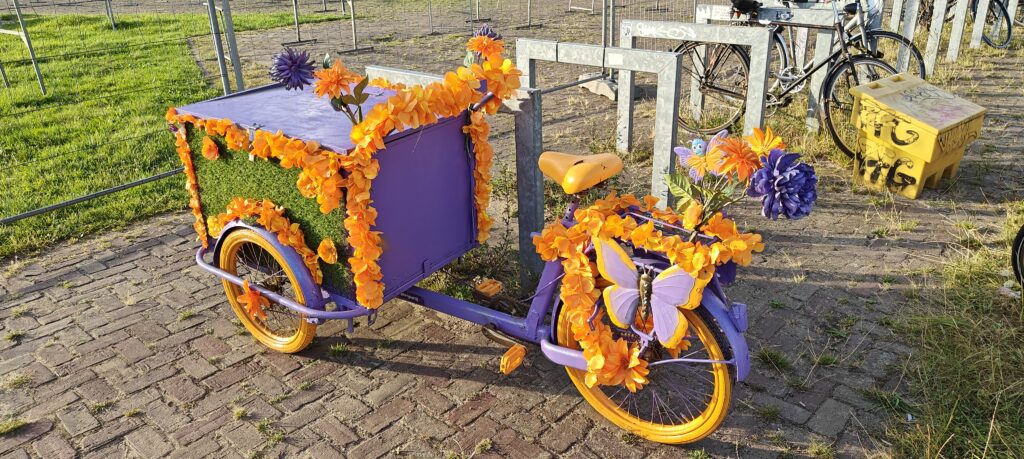
Final Thoughts
A sunset stroll through Amsterdam’s Graffiti Park was more than just a leisurely evening activity; it was an immersive experience that touched my heart and soul. The park’s vibrant artwork, rich history, and sense of community made it a truly special place. It was a reminder of the power of art to inspire, to connect, and to transform.
As I reflect on the day’s adventure, I am filled with gratitude for the opportunity to witness such creativity and to be a part of a community that values self-expression. The Graffiti Park is a testament to the enduring spirit of Amsterdam, a city that continues to embrace art and culture in all its forms.
Whether you’re a local or a visitor, I highly recommend taking the time to explore Amsterdam’s Graffiti Park. It’s a place where you can lose yourself in the beauty of art, connect with the stories of others, and be inspired to create your own. It’s a reminder that art is everywhere, and that it has the power to change the world, one stroke of paint at a time.
So, the next time you find yourself in Amsterdam, hop on a ferry, take a stroll through the Graffiti Park, and let yourself be swept away by the magic of creativity. You never know what you might discover—or how it might change you.
